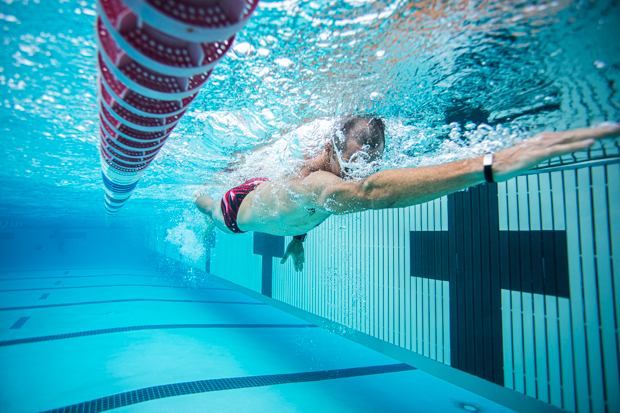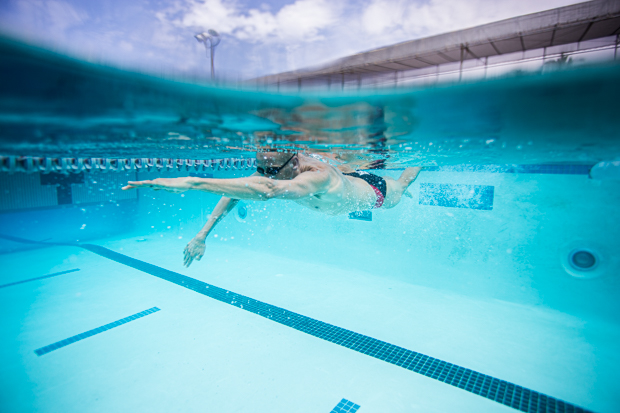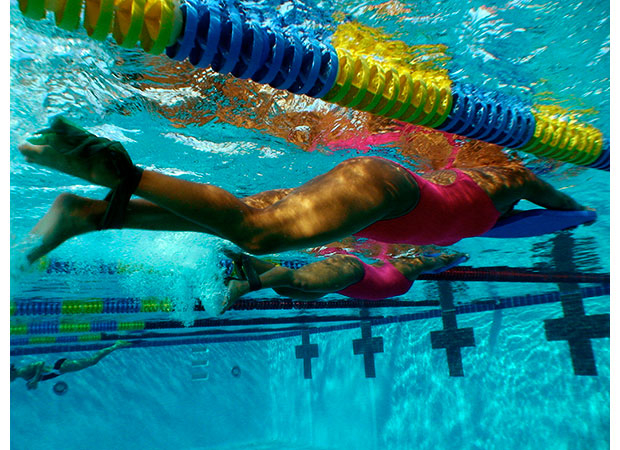Every Swim Workout is a Race… Not!
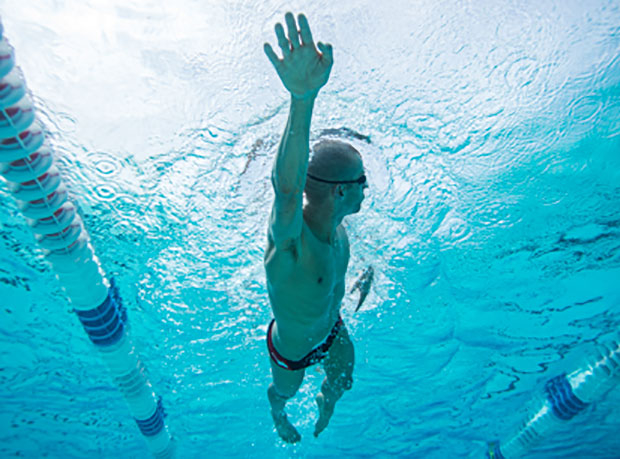
Like Three Days of the Condor, this is Eight Weeks of the Guppy. Four weeks to go. The Guppy Challenge features workouts delivered two ways: the traditional way you’re getting them here, via these articles; and preloaded into your FORM goggle. If you get your workouts the FORM way there are 5 obvious advantages: prescribed rest instead of leave interval; you don’t need a pool clock; you know your pace real-time all the time; your effort automatically uploads to your connected app; you don’t need to remember or refer to the printed workout. There’s a lot of other advantages (like post-swim analytics) but we’ll start with those.
Regardless of whether you’re a FORM-type person a pool clock-type person the axioms of swim training apply. Two of this week’s 3 workouts don’t have you working that hard. The first is an outright easy day. You might wonder what the point is and this brings us to the first axiom. The most important thing you can do to get faster in the water is swim. That’s not as universally agreed upon as what you might think. But it’s time in the water that’ll make you faster, and it’s frequency and volume that count. How hard you work when you’re in the water is secondary.
What you do when you’re in the water is important of course, but it’s not whether you do 6x400yd or 12x200yd. What’s important is that you go to the pool with reasonable frequency (3x or 4x a week); that you swim anywhere from 2000yd to 4000yd when you’re there; and that you constantly work on your technique. The technical elements on which you’re working during this Challenge are twofold. The first is creating a pulling surface that’s perpendicular to the water – anchoring your entire arm, from your bicep to your fingertip, in that spot and pulling yourself past it. The second is a kick that looks not that different when you’re swimming then it does when you’re kicking. No leg-splay. Feet on the surface. Feet pointed mostly down, not sideways, as if you’re doing the sidestroke. Anybody who masters those two things is a fast swimmer, automatically. Kick sets, catch-up drill, 6k Switch, pull sets, all are designed to help you fix 1 or both of these elements.
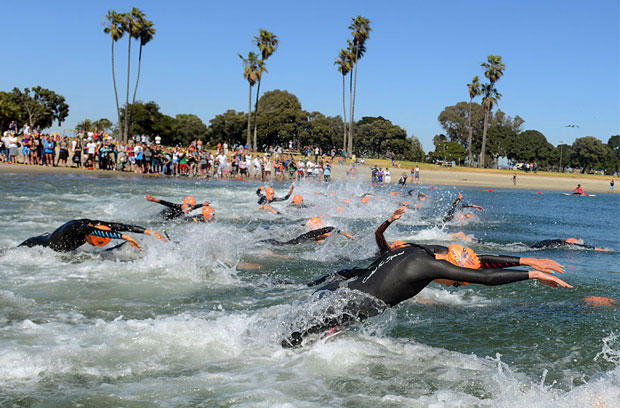
Back to effort. This is important whether you’re a swimmer or a triathlete. I wrote an article 22 years ago that had absolutely zero scientific basis underpinning it, and I don’t know to this day if academia has added anything to the discussion. Does the heart get tired? For sure, athletes sometimes get to a point in their training when their hearts can’t beat anywhere near their usual high cadence. The question is, did the heart get tired? Or did something else in the body get tired and the heart isn’t generating a high pulse rate because certain skeletal muscles (for example) aren’t working hard enough to elevate the heart rate? I suspect the heart can get tired and the fact that we don't have the formula for this is to me uncompelling. We also don't know, really, what causes something as basic as fatigue. So, as to this question, I have suspicions, but I don’t know. What I do know is that I had my first ablation for atrial fibrillation 6 weeks ago (fingers crossed, in sinus rhythm since then) and I can’t begin to count the friends of mine in their 60s who’ve had one arrhythmia or another. We don’t usually die from our arrhythmias, but they are the big sloppy kiss our heart gives us after redlining it for 4 decades.
For this reason I’m less interested nowadays in turning every workout into a high heart rate effort. It would be different if I didn’t also bike and run. If I just swam 3x a week, fine. But if I do 6, 8, 10 or more workouts a week, how often do I want my heart way up there? Remember, what’s important is not how hard I swim, but that I swim. There is 1 workout this week that is quite hard. For this reason, there should probably be bikes and runs this week where you don’t redline your heart.
I can give you youngsters the following bit of advice. As I have aged I have changed my behaviors. I don’t race every workout. I don’t drink; I sleep a lot; I got off my caffeine addiction; I’m very careful about my diet; I manage my stress; I manage my crises. I sometimes wonder what I could have done earlier in my life had I adopted these behaviors decades earlier.
For you intrepid souls who’ll need a 4th workout this week, here it is, but fair warning this is one of those go-hard workouts. If you go hard during this workout, you must back off certain other swim, bike and run workouts:
6x50yd warmup, on an interval giving you 10sec rest.
6x50yd alternating kick and swim: 1x50yd kicking, 1 swimming, 6 total.
10x150yd. Leave on the top or the bottom, whichever gets you closer to 40sec rest between each one. Swim these 150s kind of hard. Calculate and remember and average for each swim so that you can repeat this later, to see if you beat your average time.
2×50 or 1×100 easy as a warmdown.
Total yardage: 2,200
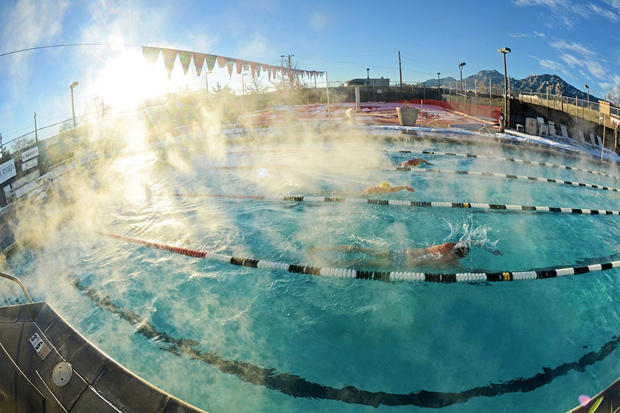
The Guppy Challenge Series, in partnership with FORM goggles, thus far:
Text for Guppy Challenge Week 1; Workouts for Week 1
Text for Guppy Challenge Week 2; Workouts for Week 2
Text for Guppy Challenge Week 3; Workouts for Week 3
Text for Guppy Challenge Week 4; Workouts for Week 4
Text for Guppy Challenge Week 5; Workouts for Week 5
Text for Guppy Challenge Week 6; Workouts for Week 6
Text for Guppy Challenge Week 7; Workouts for Week 7
Text for Guppy Challenge Week 8; Workouts for Week 8


